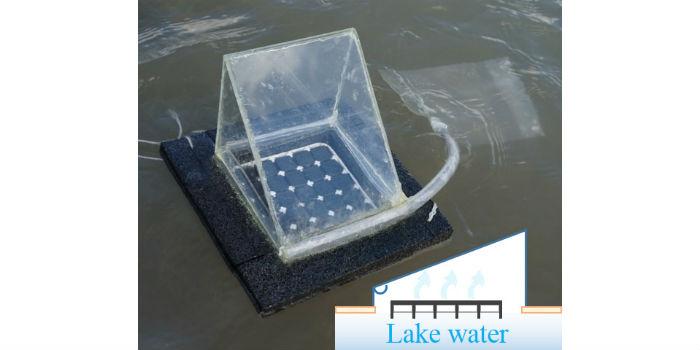 United States. It has been shown that it is possible to turn dirty water into drinking water with little more than sunlight and plastic. Now, academics have added a third element – carbon dioxide paper – that can turn this survival tactic into a very efficient and cheap way to turn salt and contaminated water into drinking water for personal use.
United States. It has been shown that it is possible to turn dirty water into drinking water with little more than sunlight and plastic. Now, academics have added a third element – carbon dioxide paper – that can turn this survival tactic into a very efficient and cheap way to turn salt and contaminated water into drinking water for personal use.
"Using very low-cost materials, we have been able to create a system that makes almost maximum use of solar energy during evaporation. At the same time, we are minimizing the amount of heat loss during this process," says lead researcher Qiaoqiang Gan, PhD, an associate professor of electrical engineering in the School of Engineering and Applied Sciences – University at Buffalo.
To conduct the research, the team built a small-scale solar distiller. The device, which they call a "solar steam generator," cleans or desalinates water using heat converted from sunlight. Here's how it works: The sun evaporates water. During this process, salt, bacteria, or other unwanted elements are left behind when the liquid moves to a gaseous state. The water vapor is then cooled and returned to a liquid state, where it is collected in a separate container without the salt or contaminants.
"People who lack adequate drinking water have used solar distillers for years, yet these devices are inefficient," says Haomin Song, a PhD candidate at UB and one of the study's lead co-authors. "For example, many devices lose valuable heat energy due to heating the bulk liquid during the evaporation process. Meanwhile, systems that require optical concentrators, such as mirrors and lenses, to concentrate sunlight are expensive."
The research team led by the UB addressed these issues by creating a solar photodetector the size of a mini-refrigerator. It is made of expanded polystyrene foam and porous paper coated in carbon black. Like a napkin, paper absorbs water, while carbon black absorbs sunlight and transforms solar energy into heat used during evaporation.
The solar still covers steam water very efficiently. For example, only 12 percent of the available energy was lost during the evaporation process, a rate the research team believes is unprecedented. Realization is possible, in part, because the device converts only surface water, which evaporated at 44 degrees Celsius.
Based on the test results, the researchers believe it is still capable of producing 3 to 10 liters of water per day, which is an improvement over most similarly sized commercial distillers that produce 1 to 5 liters per day.
The idea, which could help solve global drinking water shortages, especially in developing areas and regions affected by natural disasters, is described in a study published in the journal Global Challenges (January 30, 2017).
Source: University at Buffalo.














